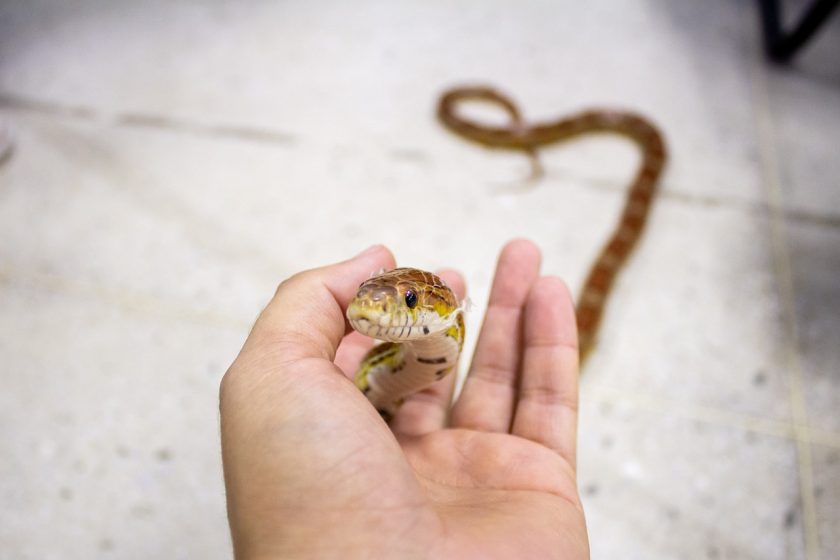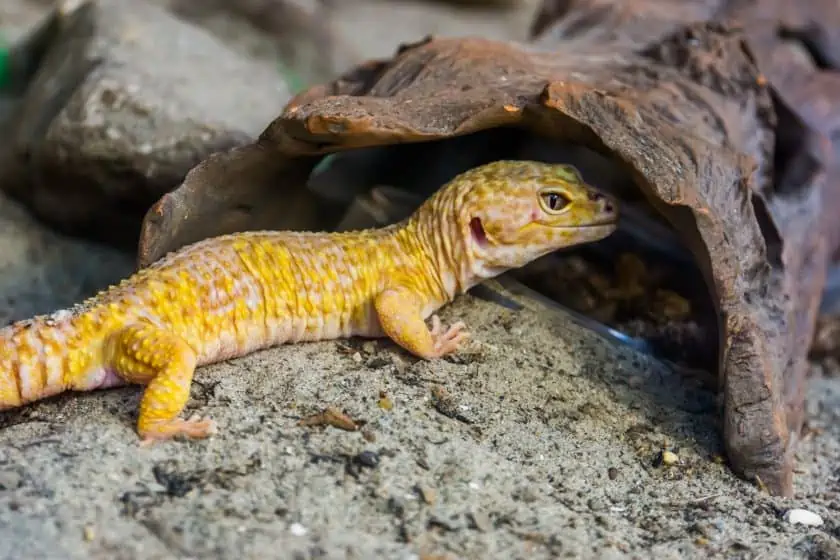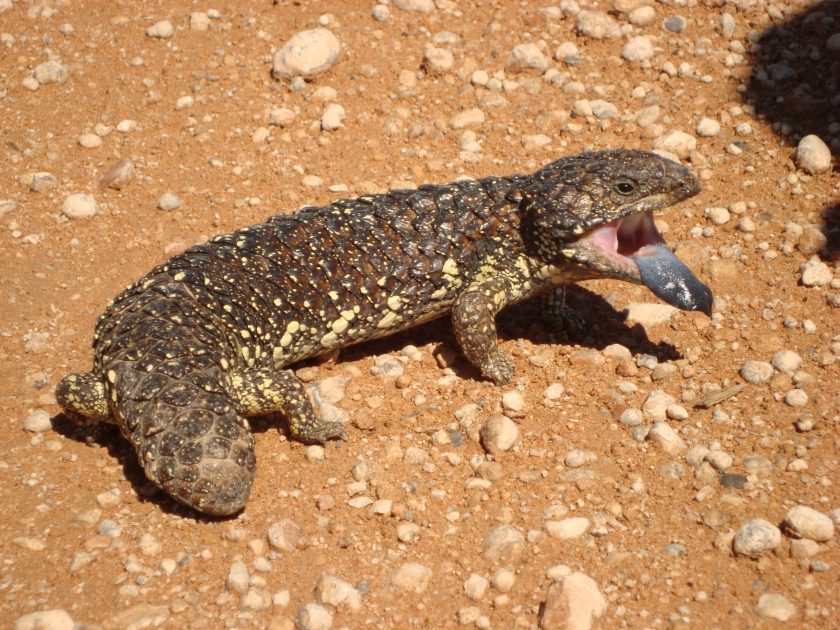Over the years, I’ve seen countless new enthusiasts walk through the same path you’re on now, filled with questions and anticipation. I remember the first time I saw a docile corn snake and the sense of wonder it brought to my life. Introducing someone to a creature that might soon become their cherished companion is always a joy.
But the big question is, which reptile is the best to start with?
Some species are more resistant to beginners’ mistakes, while others can be more challenging, even for the seasoned herpetologist. So, You need to start your reptilian journey carefully with the right knowledge.
Here are some of the main features that make a reptile a perfect fit for a beginner to keep as a pet:
- Temperament
- Size
- Lifespan
- Diet
- Housing requirements
- Common health issues
- Availability
- Price
- Special needs
Are you ready to discover which pet reptile fits your lifestyle perfectly? Let’s get started!
9 Best Beginner Pet Reptiles
Picking the right reptile friend is important; it isn’t just about how they look or are famous. For those eager to dive into the reptile world, I’ve got a list of awesome options for you.
1. Corn Snakes
| Feature | Information |
| Scientific Name | Pantherophis guttatus |
| Size | 2 to 6 feet |
| Lifespan | 20 to 23+ years |
| Tank Size | At least 40 gallons |
| Availability | Easily accessible through online breeders, pet stores, and reptile expos |
If you’ve never owned a reptile, Corn Snakes are a brilliant first choice, mainly because they’re calm and easy to handle pet reptiles.
They are mildly active, making them fun to observe without overwhelming them. Taking care of them isn’t hard. They need a clean enclosure, and their food is mostly mice.
Biting rarely happens. And if they bite, it’s usually because they mistook your hand for a feed.
With their simple care needs, gentle nature, and lack of food, Corn Snakes are suitable for anyone starting their reptile journey.
2. Leopard Geckos
| Feature | Information |
| Scientific Name | Eublepharis macularius |
| Size | 7-11 inches |
| Lifespan | 10 to 20+ years |
| Tank Size | 10-20 gallons |
| Availability | Commonly available at pet stores and online breeders |
Leopard Geckos are nighttime lizards, easily recognized by their dotted, colorful skin and the rare feature of having eyelids, unlike other geckos.
For someone new to reptiles, these little creatures are a fantastic pick. Because they’re calm, easy to hold, and not scary to look after, all they need is a clean terrarium, heating, and a consistent diet of insects.
They’re great pets because they don’t usually bite, making them less daunting for beginners.
3. Bearded Dragons
| Feature | Information |
| Scientific Name | Pogona Vitticeps |
| Size | ~1.3 to 2 feet |
| Lifespan | 8 to 10 years |
| Tank Size | Baby: 20 gallons, Adults: 50 or more |
| Availability | Easily available at pet stores, breeders, classified ads, and reptile rescues |
Bearded Dragons are truly fascinating lizards, and they get their name because of their beard-like look. Many newbies love them because they’re friendly and not at all scary.
They’re calm, easy to hold, and don’t move around too quickly, which makes things less stressful for someone just starting.
Taking care of them isn’t hard. They need a clean terrarium with enough space, proper heating, and food, including insects and some green vegetables. They hardly bite, so you can feel at ease during handling.
4. Crested Gecko
| Attribute | Details |
| Scientific Name | Correlophus ciliatus |
| Size | Approx. 8-10 inches |
| Lifespan | 10 to 15 years |
| Tank Size | 20-30 gallon tank |
| Availability | Commonly available |
Crested Geckos live high up in trees in the southern jungles of New Caledonia. These lizards have a line of raised skin, like a crest, from their eyes to their tail.
People sometimes call them “eyelash geckos” because they have tiny, hair-like projections above their eyes, like eyelashes.
So, why are they suitable for beginners?
First, they’re usually calm and not hard to take care of. Although you’re new to this, holding them isn’t too tricky.
But remember, they can get a bit jumpy if they’re scared. Also, these geckos are night owls, meaning they’re most active at night.
Looking after them is pretty simple: they mostly eat insects and some fruits. And guess what, they rarely bite. That makes them a great, worry-free pet if you’re starting with reptiles.
5. Blue Tongue Skinks
| Attribute | Information |
| Scientific Name | Tiliqua |
| Size | 1.25 to 2 feet |
| Lifespan | 15-20 years |
| Tank Size | 20-40-gallon |
| Availability | Available through breeders, some pet stores |
Blue Tongue Skinks are fascinating lizards; you can easily spot them because of their bright blue tongues.
This one might be perfect for you if you’ve never had a reptile. They’re pretty calm, and they don’t need complicated care.
These skinks are friendly, and because they aren’t too active, you won’t have a hard time if you try to handle or play with them.
They’re not picky; they love eating plants and meat, like fruits, vegetables, and protein.
So getting their meals ready isn’t too tricky. They’re mostly peaceful creatures, so they don’t bite, making them a solid choice for newbies.
6. Green Anole
| Aspect | Detail |
| Scientific Name | Anolis carolinensis |
| Size in Feet | 5-8 inches |
| Lifespan | Up to 5 years |
| Tank Size | 10-gallon tank (minimum) |
| Availability | Common in the pet trade, easily accessible |
Green Anoles are also ideal for first-time owners because of their manageable size and small weight, so they’re easy for beginners to take care of.
They might act shy or nervous, so you won’t be handling them too much. This is great for new owners, as it teaches them about respecting their pet’s space.
They love climbing. Give them a tall space, and they’ll show you their natural tree-climbing skills. It’s really fun to see them in action. When it comes to their diet, they mostly eat small insects like crickets and mealworms.
Though they tend to bite when threatened, their bites are harmless, making them a safe pet for newbies.
7. Argentine Black and White Tegu
| Parameter | Information |
| Scientific Name | Salvator merianae |
| Size | 2.5 – 4 feet |
| Lifespan | 15 to 20 years |
| Tank Size | Babies and Juveniles: 40 gallons, Adults: 6 ft. by 4 ft. |
| Availability | Available in pet stores and online breeders |
The Argentine Black and White Tegu is an impressive reptile known for its black and white colors; it’s pretty easy to spot. It’s a big creature but pretty clever. The best part? Start bonding with them when they’re little, and you’ll have a gentle, friendly pet on your hands.
But remember this – they’re active movers. So, if one of these will be your pet, ensure they have ample space and make it escape-proof. Their home essentials include UVB lighting, a cozy basking spot, and a diverse menu – insects, small animals, and fruits. While they might look scary due to their size, most of their bites come from food motivation. With the right approach and regular handling, you can keep those biting moments rare.
8. Ball Python
| Aspect | Detail |
| Scientific Name | Python regius |
| Size | Males: 2-3 ft, Females: 3-5 ft |
| Lifespan | 20 – 30 years or more |
| Tank Size | Minimum 30 to 40 gallons |
| Availability | Commonly available through pet stores and online breeders |
Ball Pythons are medium-sized snakes that come from Africa. They’re popular pets, especially for beginners, because they’re super gentle and easy to hold. If they get scared, they roll into a tight ball.
These snakes are calm and don’t move around too much, so newbies won’t find them too hard to care for. These snakes mostly eat mice during feeding time, so it’s simple. While they’re peaceful and don’t bite often, being gentle with them is still important; it helps build a friendly bond.
9. African Sulcata Tortoise
| Attribute | Information |
| Scientific Name | Geochelone sulcata |
| Size | 2-3 feet |
| Lifespan | Around 54 years |
| Tank Size | Baby: 2ft by 3ft, Adult: 10ft by 10ft |
| Availability | Common, easily accessible through breeders and pet stores in the southern United States |
The African Sulcata Tortoise, often called the African spurred tortoise, is a fascinating creature, becoming a popular pet choice. This tortoise stands out because it’s the third-largest tortoise kind in the whole world; you might’ve seen some in zoos or conservatories.
New tortoise parents love these shelled creatures because they’re gentle and like to explore, even though they move at a turtle’s pace, real slow and steady. This calm behavior makes them easy to handle and great for beginners who don’t want a feisty pet.
When it comes to their diet, it’s pretty basic: they love munching on grasses, weeds, and flowers, but you should sprinkle some calcium on their food.
Although these tortoises are large and require ample space, they are relatively easy to care for, especially when housed in an outdoor enclosure resembling their natural desert habitat.
What Makes a Good “Beginner Reptile?”
When choosing a reptilian companion, most people often wonder which reptiles make the best and easiest pets to fit different lifestyles.
Here is what you should know:
- Captive-Bred is the Way to Go: If you pick reptiles bred in captivity, you’re off to a good start because they’re usually healthier and already used to people, unlike the wild ones.
- Easy-to-Feed Diet: It’s a big win if the reptile doesn’t need special or fancy food. This makes feeding times straightforward, saving you hassle and stress.
- Friendly Nature: The ideal reptile buddy is calm and gentle. This way, you’ll get along just fine, and there’ll be no unexpected hisses or bites.
- Manageable Size: Let’s talk about size. Think of reptiles like Bearded Dragons – they don’t get super big. And this means they won’t suddenly outgrow their space or become hard to handle.
- Simple Habitat Requirements: If they’re not fussy about their living conditions—like needing special lights or heaters, that’s fantastic for you. Less fuss means an easier time setting up their home.
- Sturdy Health: Robust health and resistance to common ailments are desirable traits in beginner reptiles. Fewer trips to the vet save you time and money.
Tips for Keeping Reptiles
Creating a comfortable and suitable habitat for your reptile is the first step toward a happy and healthy pet. As a beginner, understanding your reptile’s natural habitat will help you replicate a similar environment at home. Here are some tips for housing reptiles:
Stay Hydrated
- Always have water ready so your reptile doesn’t get thirsty.
- For those reptiles that love the water, like aquatic ones, make sure there’s plenty. If they tend to dry out, a good soaking spot is essential.
- Small lizards might like sipping water from the leaves, so misting the environment or a little drip setup could be a hit.
Keep Humidity in Check
- Maintain humidity levels just like the reptile’s natural environment.
- Low humidity causes their skin to get rough, and they might have trouble shedding. At the same time, high humidity could result in skin infections.
Cleanliness is Key
- Nobody likes a messy room, not even reptiles. Clear out any waste, leftover food, and other icky stuff.
- Clean their space and disinfect the tools you use for cleaning and feeding to keep diseases away.
- Change the floor material (substrate) at least once a month, and give their space a deep cleaning every three months.
Warmth and Comfort
- Choose the right heating gear, whether bulbs, mats, or special heaters, to regulate the temperature of your reptile’s enclosure.
- Research your reptile’s optimal temperature requirements, as each species can differ.
Expert Advice
- Understanding the nitty-gritty of reptile housing requires some experience and knowledge. Don’t hesitate to ask a vet, local experts, or online reptile communities.
Final Thoughts
Choosing a reptile for a companion – especially for newbies – is super important. These creatures demand a serious level of commitment. But guess what? It’s also a joy-filled experience. This isn’t just about getting a pet. Nope. It’s about welcoming an intriguing new buddy into your life. So, Can you imagine a gentle tortoise hanging out with you? Or what about an energetic snake? And there’s also the option of a colorful lizard. These are the choices, and they’re all yours. Pick one that aligns with how you live and what you can handle – that way, you ensure a mix of learning and loving moments.
So, are you ready to welcome one of these reptiles to your home? Which one has caught your eye? We’d love to hear your thoughts, so drop them in the comments!











